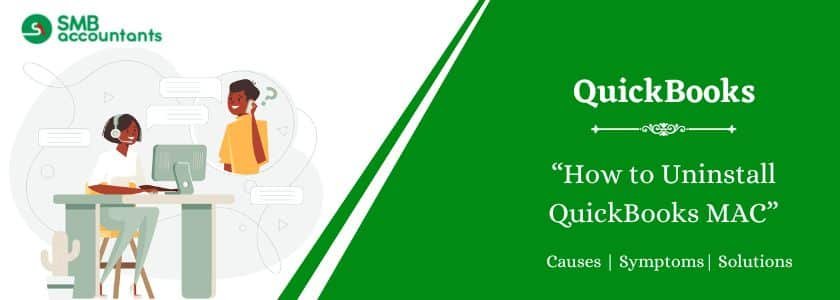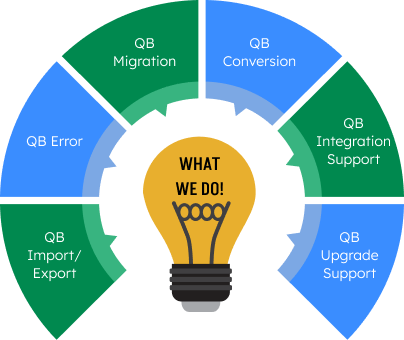QuickBooks for Mac is a popular accounting software used by small and medium-sized businesses to manage their finances efficiently. However, there are times when you may need to uninstall the application—perhaps due to performance issues, outdated software, or the need to reinstall a newer version. In this guide, you’ll learn the proper steps to completely uninstall QuickBooks on your Mac system.
Table of Contents
Why Uninstall QuickBooks Mac?
There are several valid reasons why you might want to uninstall QuickBooks on your Mac:
- You’re upgrading to a newer version of QuickBooks.
- The software is not functioning correctly and needs a fresh installation.
- You’re switching to another accounting platform.
- You want to clear storage space or reset the app settings.
Get Expert Advice to Fix All Accounting & Bookkeeping Problems

How to Uninstall QuickBooks on Mac?
Here’s a complete and safe method to remove QuickBooks from Mac:
Step 1: Quit QuickBooks If It’s Running
Before uninstalling QuickBooks:
- Open Activity Monitor from Spotlight (Command + Space > search “Activity Monitor”).
- Search for any QuickBooks-related processes and click Quit.
- Ensure QuickBooks is fully closed before moving forward.
Step 2: Remove QuickBooks Application
- Open Finder.
- Go to the Applications folder.
- Find QuickBooks.app.
- Drag and drop the app into the Trash, or right-click and choose Move to Trash.
Step 3: Delete QuickBooks Support Files
Removing the app alone doesn’t delete associated support files. To fully uninstall QuickBooks Mac:
- From Finder, press Command + Shift + G.
- Type in the following folder paths one at a time and delete any “QuickBooks” folders:
- ~/Library/Application Support/
- ~/Library/Preferences/
- ~/Library/Caches/
- ~/Library/Logs/
- ~/Library/Containers/
- ~/Library/Saved Application State/
- Delete anything related to QuickBooks from these folders.
Step 4: Empty the Trash
Once all files are removed:
- Right-click the Trash bin in the Dock.
- Choose Empty Trash to permanently delete QuickBooks from your system.
Common Mistakes to Avoid When Uninstalling QuickBooks on Mac
- Not quitting the application before removal.
- Skipping hidden files in the Library folder.
- Forgetting to back up your company file before uninstallation.
Note: Always back up your QuickBooks company file before uninstalling to avoid accidental data loss.
Reinstall QuickBooks After Uninstallation
If you plan to reinstall QuickBooks:
- Visit the official QuickBooks Mac download page.
- Choose the version you need and download the installer.
- Follow the on-screen instructions for a fresh installation.
Conclusion
Uninstalling QuickBooks on Mac is a simple but crucial process to avoid file corruption and compatibility issues in the future. By following the correct steps and deleting all related files, you ensure a clean slate for a reinstall or transition to a new accounting system.
If you’re experiencing issues during the uninstall process or plan to reinstall QuickBooks, don’t hesitate to reach out. Visit our website or contact us page for expert assistance from our QuickBooks Mac specialists.
Frequently Asked Questions
Q 1: Can I uninstall QuickBooks without losing my company files?
Ans: Yes. Your company files are stored separately. Just ensure you don’t delete them during the uninstall process.
Q 2: Is it necessary to delete support files manually?
Ans: Yes, if you want to fully remove QuickBooks. The application alone doesn’t remove leftover files.
Q 3: Can I reinstall QuickBooks after uninstalling?
Ans: Absolutely. Once uninstalled, download the latest version from the official QuickBooks website and follow the setup instructions.
Q 4: What should I do if QuickBooks won’t uninstall?
Ans: Try restarting your Mac and make sure no QuickBooks-related processes are running. Use AppCleaner for assistance if needed.
Q 5: Are there uninstall tools provided by Intuit?
Ans: Currently, Intuit does not provide a dedicated Mac uninstaller tool. Manual removal is the recommended method.

Adams Williams
Adams Williams is a seasoned accounting professional with over 4 years of experience in bookkeeping, financial reporting, and business accounting solutions. Specializing in QuickBooks software, Adams combines technical expertise with clear, accessible content writing to help businesses streamline their financial processes. His insightful guides and how-to articles are crafted to assist both beginners and seasoned users in navigating accounting software with confidence.



